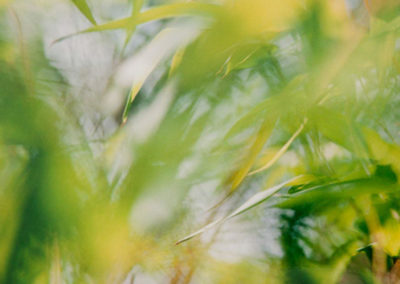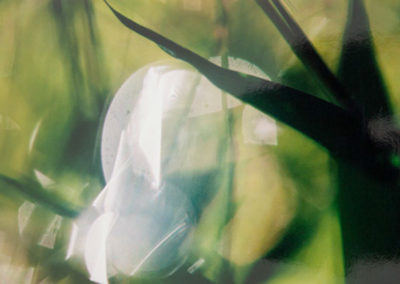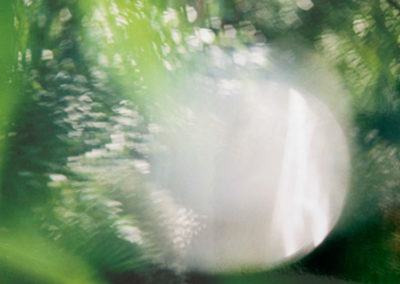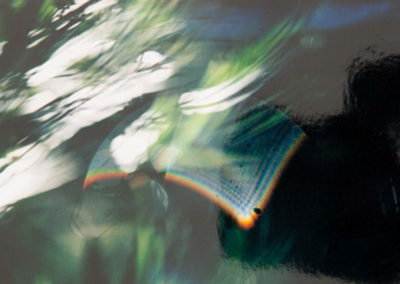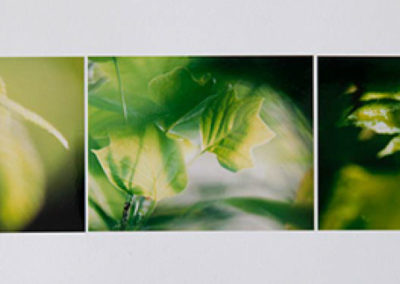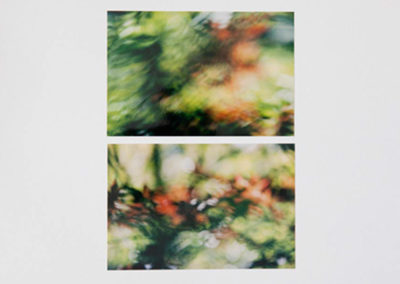There is much photographic and other artwork I find interesting and quite often inspiring. However, I can only cite a handful of photographers work I can genuinely say that has had a positive influence in my own personal work. One such person is John Blakemore. Someone that is unlikely to need much introduction, but I’m sure whom many others can also can say has had similar influences in their own work and careers.
Over the past couple of years I have had the great pleasure of becoming personally acquainted with John and in that time I have picked up snippets of what makes John ‘tick’, what it is that drives him to be so creative. So much so, that even at the nimble age of 80, after at least 50 years of a photographic career vocation he is just as productive now – perhaps more so – than when he first picked up a camera in his twenties.
Having spoken to John on a number of occasions it is very clear that creativity for him is a deeply personal experience and it was a great honour for me and my friends in the ITO Collective for John to agree to a rare interview. Indeed, a wonderful experience where John was very open and giving with his time. Even at times willing to share some quite personal insights about how self-expression, a deep interest in human-kind and an obsession to make images are just some of the things we discover lie at the core of his astonishing work.

JW: What is it that drives your desire to be creative?
JB: I suppose I have always been an image maker it is always been necessary to me and all through my childhood I drew and painted and then when I discovered photography at the age of around twenty that took over. But it has always been necessary for me to make work. I am not really happy if I am not making images. So it is a compulsion and obsession I suppose.
JW: In terms of your creativity, has it always been imagery related or has there been a writing aspect to it as well?
JB: I am a compulsive reader, enjoy language and have written for books but I am not a notebook keeper. I wrote poetry as a child but my school record was not very good because I hated school. I generally made a nuisance of myself [laughs]. I did have something published in the poetry magazine every time it was published whilst I was at school but it is not something I followed up in any way.
JW: Looking at your biography through various background research there seems to have been a transition where you moved from documentary and journalistic photographic work to the more metaphorical imagery that has been a great part of your later and current work, what led to that?
JB: I began photography after seeing the Family of Man book [Catalogue from the photography exhibition curated by Edward Steichen] and I really saw it as a way of changing the world and when I was demobbed from the Royal Air Force I worked for Black Star for a time but I fairly quickly realised that I have not got a freelance mentality. I worked commercially for 12 years continuing a personal documentary practice and exhibiting the work locally.
In 1970 I came to Derby to teach having made little work the previous year. I went on a trip with some students to London and I was travelling back to Derby talking to a student about the ‘creative block’. He said that him and two other students had an exhibition arranged, he invited me to join them and I agreed.
After agreeing to have an exhibition, I thought, well now I have to make some work. The experience which had been intensive for me just before that had been spending a winter in Wales. I had not photographed a lot but I had walked and written notes about the landscape. So I decided I would go back to Wales. At the time I only had 35mm gear and thought that is not really suitable for the landscape. It happened that at the time I was sharing a flat with a Japanese student and he had a Zenza Bronica so I borrowed that and went to Wales for the weekend. I made the images for the exhibition. That was really the start of the landscape work.
When I was working in documentary if somebody had said you would photograph the landscape I would have scoffed at him.
It was for me a rediscovery of childhood fascinations. In my childhood I was a keen ornithologist and I spent a lot of time in the landscape. When I first left school I worked on farms for two years. It was a rediscovery because after my stint in the Royal Air Force I had been living in cities and I had forgotten that connection.
Going back to Wales was really a remaking of that, getting back to the landscape. Spending time in Wales was a very important experience for me.
[John quotes from the introduction of his book ‘Inscape’, a passage referring to the time he visited the Mawddach Estuary in North West Wales]
‘As soon as I arrived I felt spiritually akin with it. It had an overwhelming effect on me, a land of paradox, harsh lunar landscapes running with gurgling water and supporting everywhere a riotous life. From the very rocks trees stretched upwards, life at its most tenacious gripping convulsively at the unyielding rock and waving twisting in the unrelenting wind. Limbs green with the parasitic growth of moss and lichen which weld tree and rock into one entity. Trees grey and armoured as the rock itself. Wood froze to the rock for the struggle for life and overall a sky as subtle and ever changing as the landscape itself.’
JW: Do you tend to work better with a commitment then or the freedom of working to your own schedule?
JB: I do both or either, the main pressure is from myself, as I say, I do have this compulsion to make images.

JW: Looking now to the title of one of your early books ‘Inscape’. Is this the beginning of the period where you started to think perhaps more inwardly about your work rather than a more literal documentary approach?
JB: Yes, ‘Inscape’ is a term from Gerard Manley Hopkins and it is that connection between the exterior world and your inwardly response to it and this became quickly very important to me in the landscape. In fact, the first set of pictures I called a sequence was called ‘Wounds of trees’. I had gone to Wales and had been photographing close ups of trees and that was all I was doing when I started. Then I made a connection between my own inner state which at that time was pretty bad, from the process of wounding, then from there I made the connection to the wounds on the trees.
So I began to see very much in terms of the landscape as a metaphor for my own feelings. It was being attracted to the exterior world and seeing that through one’s own personal experience. Wanting images that connected to both of those things
JW: Was there a real connection then with things happening in your personal life at the time?
JB: Oh yes because when I first went to Wales I had just broken up with my first wife. And it was a period of some sort of emotional trauma for me. So yes, I made those connections.
JW: You use the word ‘sequence’ in relation to a connected set of images, so that leads me to the work of Minor White who also used that term in a similar way. How familiar were you of his and others work that explored metaphor in their image making?
JB: When I began working in the landscape I did not really know anything about other landscape photographers at that time, and certainly there was not really a tradition of landscape photography in Britain at the time. I knew of Ray Moore’s work and saw some work of his in an exhibition. Then a friend brought a copy of ‘Mirrors Message Manifestations’ [Minor White] and I was very attracted by his ideas about the idea of the sequence, and the notion of the metaphor was exacerbated by that.
I had worked in documentary and commercially, and was self-taught. I only gradually became aware of an alternative tradition. So the discovery of Minor White and the American tradition was of great significance to me.
JW: Is it true to say much of your work since then has been an exploration of metaphor?
JB: Yes, it underpins all the work that I make.
JW: When you set out to create a new piece of work, is what your endeavouring to do always driven by inner expression.
JB: Inevitably yes. My landscape work was for me an exploration of the landscape as energy, an energy revealed through the processes that shape the landscape through time.
JW: Following on from the ‘inscape’ discussion, the term ‘biographical landscapes’ is used, can you explain that a little more?
JB: Yes, I think that is the term ‘inscape’. They are biographical in the sense they are understood by the photographer and hopefully by the audience as a reflection of the inner space of the photographers as well as the exterior reality.
JW: As you started to develop these sequences have you moved away from having a standalone image or is there still a place in your repertoire for that?
JB: Well there is a contradiction here because when you are making a photograph you are concentrating on a single image, but I’ve always thought in terms of a group of images. Minor White referred to this as a constellation which I think is quite a nice term. So if I want to photograph something new I’ll immediately want to know what the images are that surround it to give it a context. So I do not really think in terms of single images at all apart from the moment the image is exposed [laughs].
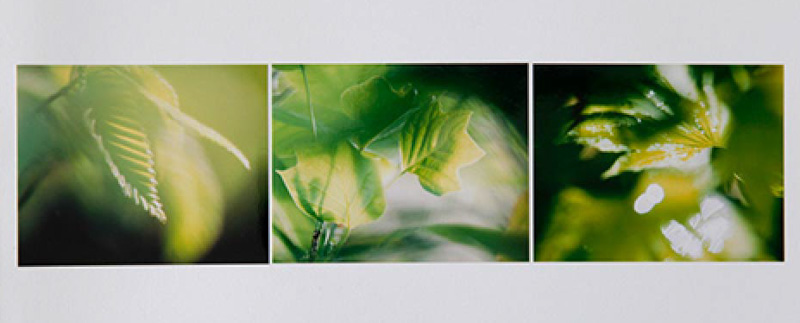
JW: Let us use that last point as a segway into your book making! Did I see correctly somewhere quoted that your first handmade book was in 1984?
JB: That was the first one where I consciously saw myself as a book maker. Up until then I had always made little books, spiral bound generally and if I went to stay with friends I would make photographs and send them little books when I came back home. I have made books of my children. But I had not really thought about the book as a source of serious enterprise.
Then whilst I was teaching photography in Derby in 1984 a group of us on the photography course who were interested took over the book making course for a semester one year and we made sewn books. So my first book was a book of a cat I owned at that time, a book called the ‘Book of Schmaltz’ which is probably the world’s biggest book dedicated to a single cat with ninety odd images in it [laughs].
JW: Was your book making intended to be a professional enterprise?
JB: No, not at all. I did not see any of my book making being a professional enterprise to make profit, it is just something I do for myself.
JW: Have you subsequently taken any other tuition in book making?
JB: Not formally, the influence of fellow book-makers and reading. I was teaching a lot of workshops and people were asking can we make a book and so I developed the fold and glue books as something you could make anywhere and I have carried on doing those. I have not gone back to sewing books, anyway I cannot remember how to do it anymore [laughs].
JW: At some point you then began to create work almost entirely within your own garden and home. When and why was that?
JB: That was a bit later, the intensive landscape period was from 1971 to 1981. I find that I generally work on a subject for a while and then I begin to question it and I question it so much I think there is no longer any point during this. I was like that with documentary and the portrait. And I got like that with landscape as well, so I stopped working in the landscape. I can just say that as it was very traumatic at the time and having stopped working in the landscape and being someone that had to make images I said to myself what can I do now.
So I began working with things that I found around my house and garden, and that began the black and white still life work. But when I moved to the house I am in now I began to photograph my living room and garden that is all I did until last year. That is all I did for ten years, I did not take a camera beyond the house and gardens.
JW: I understand you have recently been making work at a local arboretum. Do you see this as a return to the landscape or do you see it as something else?
JB: My partner was given a residency at the local arboretum. I went along and began to photograph, perversely deciding to used 5×4 and work in black and white. We then applied for a joint residency and planned to work in the space for a year.
I saw this is a return to a narrow landscape in an urban setting. Much of the work in my garden I see as a species of landscape, a landscape of light.
JW: Is the book always the final outcome of any series of images you’re working on, or simply sometimes making images?
JB: Well, it is always for the imagery, but I do like there to be an end product. In the seventies and eighties it was always exhibitions. I exhibited continuously for about twenty years, but you get tired of it and people get tired of you of course – you are an old boy around the block and they want new people [laughs]. The book itself is like an exhibition, but you are making if for yourself rather than for public display. I like there always to be an end product, so you can say this piece, which is perhaps not finished, but at a defined point. I do not like work which is unconsidered. The book seems to me to be the proper home for photographs. An exhibition is a very fleeting thing, whereas a book sticks around. You can look at it and think about it in different ways each time.

JW: At what point did people start to become aware of your books; was there a period where you were just making them for yourself, and then how did that kind of connection to the public with your books come about?
JB: Well, it has never really been made, the only people who saw or knew about my books were those people that came on my workshops. They do not have a public face beyond that. There are some in my archive now of course, which is difficult to access but you might be able to get in to see them. But I never necessarily saw it as a public process, but as something which I did for myself. When I was still exhibiting that was rather good because there is such a pressure to keep exhibiting continuously, but the book for me was my own private practice. I did not want it to be public, my public face was the exhibition and my private face was the books I made. In the beginning though the images in the books were very different work to what I was exhibiting.
JW: The more commercial books that have been published with your work, how did those come about? Were they a commercial venture, a form of income?
JB: Books are not that to any great extent. Published books, you do not make very much money from. The only thing they do I suppose is help establish your name. The first book I made which was an Arts Council book began to help make my name. ‘Inscape’ and the ‘Tulip’ book were both published by Zelda Cheatle Gallery and they were financed through people in ‘the City’. I think Zelda wanted me to have a book because it was some way of referring to my work as I am not very good at cataloguing things [laughs]. Once you have a book someone could say, ‘I would like an image from page 74 or wherever’. Unfortunately though, I did not have the foresight to keep many of my books [laughs loudly!]
JW: If we now look to the series of images we are sharing as part of this feature; ‘Seduced by light’. Can you place the time when light itself became the subject of your work rather than the necessarily illuminating component?
JB: It has been going on for a long time and I actually made images similar to those in the 1950’s. They were actually my first landscape photographs although I did not think of them as landscape photographs at the time, I thought they were about colour and at the time my main practice was mainly about documentary. But then they went underground and re-surfaced again in the mid-80’s. But the main thing that started the light work was the quote from the book ‘Catching the Light’ by Arthur Zajonc that I use all the time; ‘what is this invisible thing called light, that reveals everything except itself’.
That has really been my mantra for the last thirty years and I explored it in black and white, and colour with all sorts of different subject matter. I am fascinated by light, but I think really it is impossible to make a photograph which is just about light. It is really about seeing how close one can approach to that. But of course with the photograph, what you photograph tends to try and remain, and it is really about finding ways to reduce the referent and honing in on the light. I think with the ‘Seduced by light’ work is as close as one can get to it – or as close as I can get to it so far. But I have done all sorts of series about getting around this idea and it fascinates me.
I am constantly aware of light. If I see a flicker of light and I do not know where it is coming from I have to try and track it down. I think that is probably one of the most valuable things I have got from photography, an awareness, because it is constantly with you.
JW: Do you think you are ever likely to run out of subject matter, considering the huge body of work you have already created?
JB: Things come to a sort of conclusion, I think the photography in this room is finished. I think my photography in my garden is probably finished. I have not done any this year; I could have done, but I did not. I find that with sequences I sometimes see things which I think that could be part of that sequence, but I do not photograph it; I acknowledge its existence and pass on.
JW: Growth and decay features in a number of series of your work, how much of that metaphorically relates to human cycle of life?
JB: I see the work I do with plants and flowers as a metaphor for humanity. I was photographing flowers, but that process is analogous to the process of the human life. So I see the work as being about that. One series of still lifes was about the garden, ‘The Garden, Fragments of a History’ and that for me was very much about an awareness of the transitory-ness of my occupancy of that space. Because it is about the history of the garden and the occupancy of other people prior to me and forward to when I was no longer there – which I am not actually because I have moved from that house. So that sort of awareness underlies the work all time.
JW: With your black and white work I may be wrong here, but you have always developed and printed it but that does not appear to be the case with your colour photographs, why is that?
JB: For me the black and white work is very much about control of process, learning to make prints with a subtly and richness which evoke the surface qualities of the subject. When I began working in the landscape I wanted to make prints which had that sort of richness and fullness of texture.
The colour was about the moment of seeing, then the only other control I had was sequencing and making it onto a book. So I was prepared to abrogate control of process and move to what I think is probably the most important thing, the moment of seeing. I just enjoy that process, the making of images and then sequencing and making a book.

JW: With the colour work I’ve only ever seen small [4×6, etc] prints of yours, have you made larger prints?
JB: I have had three colour exhibitions. I did not exhibit colour for a long time, but I put together sequences of prints, each that were perhaps about three of four feet, quite big. So when they were put together they were about six or seven feet long. But they were made from the 35mm and they had a particular quality. They are in my archive in Birmingham if you want to see them.
JW: That sounds like a great idea, let us make an appointment and ask them to get everything of yours out on display for us.
JB: Do not say everything, there is a lot of stuff. I have got too much [laughs]. Anyway I am not happy in that my favourite people had to leave the Archive and now it is also much more difficult to see the work.
JW: Now we have explored a few areas, lets quickly go back now to the first question and repose it – What is it that drives your desire to be creative?
JB: I would never call it a desire to be creative, because I am not quite sure what that means.
To make images is a process of looking intensely, of working and reworking a place or motif. The process of learning to see, to understand and to translate that understanding into images, this for me is the basis of image making and perhaps of creativity.
Whether or not I am creative is not my decision, that is for someone else to say. I just make the work [laughs]
***End of interview***
A big thank you to John!
John has very kindly allowed us to share a large number of page spreads and photographs from his ‘Seduced by Light’ handmade book
John Blakemore will be exhibiting at the Inside the Outside exhibition at The Photo Parlour, Nottingham, 15th October to 12th November.
About John
John Blakemore is one of England’s leading landscape photographers and is Emeritus Professor of Photography at the University of Derby, where he taught from 1970 to 2001 after a 12-year career in documentary and commercial photography. John has exhibited extensively and his printed and published work is held in important public and, private collections worldwide.


